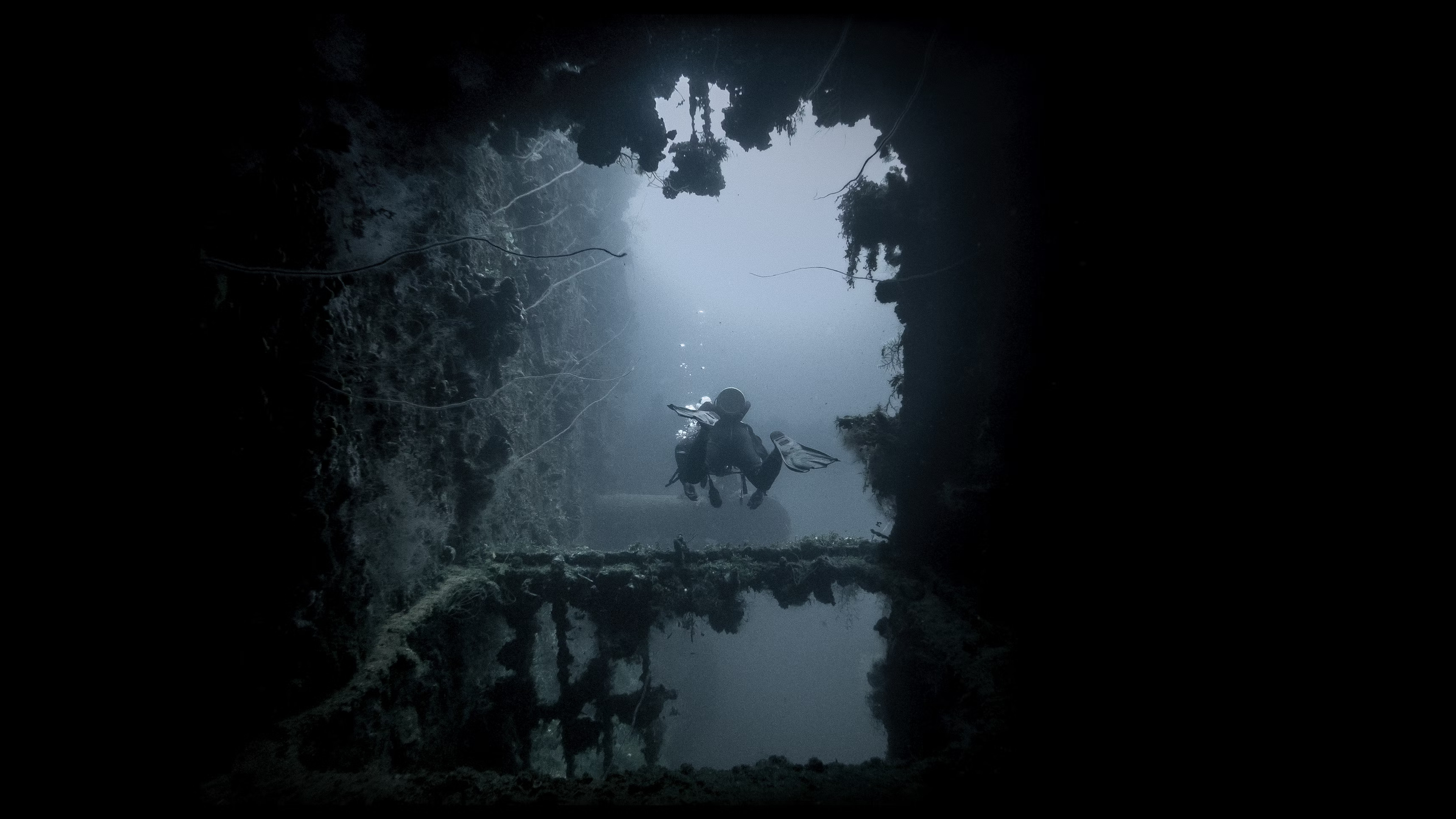RussellDunphy
The Hamlet in the Lake

The lake, along with its dam, was constructed by an energy company in 1966 to provide hydroelectric power to the grid and a source of drinking water to the local population. This was a history and a purpose lost on the carp, perch, bream, and catfish who now populated its depths. At the time of its creation, it had been decided that the cost of demolishing the small hamlet of 20 or so houses and a sawmill on the site of the future lake was not merited, and the buildings had been left in place to be submerged and slowly decay.
Something about parallel lines draws you to stay within their bounds, and so the fish found themselves quite naturally following the hamlet’s roads much as the previous inhabitants had. They took shelter in the shells of the abandoned buildings, laid their eggs there, and left them to hunt for food. In this way, life in the hamlet continued much as it had before, as if the men and women who lived there had been transformed into fish.
Few of the hamlet’s new residents ventured far towards the surface, and of those that did, some never came back. Had they done so, however, they would have seen, as they swam upwards towards the light, mysterious shadows cast by swimmers, canoes, and paddle boats above them.
It was a warm August day, the summer sun piercing unusually deep, its light, refracted through the gentle waves, casting dappled shadows on the bottom of the lake, when the child arrived at the hamlet. A boy of around 11 or 12, by the time the first fish became aware of his approach any signs of previous struggle were gone. Placid, serene, and still, he sank slowly, eventually coming to rest at the side of the road leading up to the sawmill. The fish, their routine disturbed, redrew their routes to skirt around the hamlet’s strange new addition. A few of the carp, more curious than the others, swam cautiously up to investigate, but soon found themselves retreating, and from then on kept their distance.
Over the next few days the body began to swell and to bloat. Something had changed in the hamlet. The water hung heavy with a melancholy that the fish were not equipped to feel. Without being conscious of it, it nevertheless affected their behaviour. The routes they swam had changed; they swam more skittishly, were more cautious, and spent more time indoors, nestled in the corners of the buildings.
Three days after the child’s arrival a thin beam of light landed on the collapsed roof of the sawmill. It veered left, then right, then left again, wheeling in long, slow, curious loops. Soon it was joined by a second, and then a third. They weaved their paths across the building and down onto the road, until, passing over the child, one of the beams came to a sudden stop, retreated slowly until it illuminated the boy’s peaceful face, and was soon joined by the others. After a pause, the lights began to grow brighter and brighter, and eventually three human divers came into view.
~
The boy was gone and life in the hamlet returned to what it had been before. Who knows if fish remember? Who knows if, as they swim their route down the road past the sawmill, a synapse fires between two neurons that were not there before, and their path swerves, almost imperceptibly, just a little?